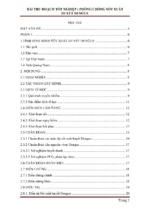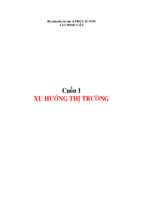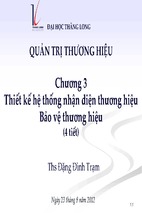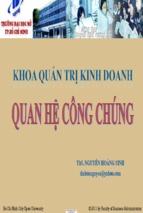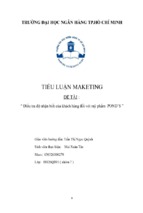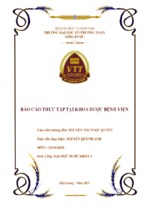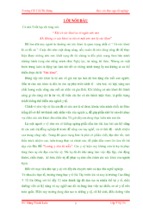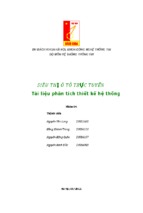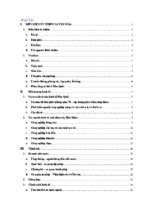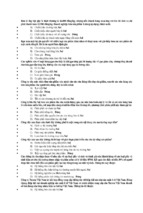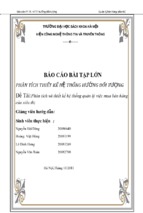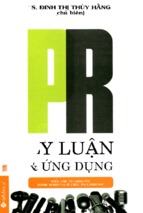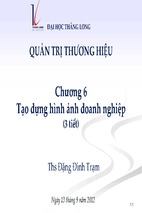The University of Toledo
The University of Toledo Digital Repository
Theses and Dissertations
2013
A comparison of strength, ROM, laxity, and static
and dynamic postural control between ankle
copers and patients with chronic ankle instability
Heather A. Boley
The University of Toledo
Follow this and additional works at: http://utdr.utoledo.edu/theses-dissertations
Recommended Citation
Boley, Heather A., "A comparison of strength, ROM, laxity, and static and dynamic postural control between ankle copers and patients
with chronic ankle instability" (2013). Theses and Dissertations. Paper 31.
This Thesis is brought to you for free and open access by The University of Toledo Digital Repository. It has been accepted for inclusion in Theses and
Dissertations by an authorized administrator of The University of Toledo Digital Repository. For more information, please see the repository's About
page.
A Thesis
entitled
A Comparison of Strength, ROM, Laxity, and Static and Dynamic Postural Control
Between Ankle Copers and Patients With Chronic Ankle Instability
by
Heather A. Boley, ATC
Submitted to the Graduate Faculty as partial fulfillment of the requirements for the
Master of Science Degree in Exercise Science
_________________________________________
Dr. Phillip Gribble, Committee Chair
_________________________________________
Dr. Kate Pfile, Committee Member
_________________________________________
Dr. Brian Pietrosimone, Committee Member
_________________________________________
Dr. Patricia R. Komuniecki, Dean
College of Graduate Studies
The University of Toledo
May 2013
Copyright 2013, Heather Ashley Boley
This document is copyrighted material. Under copyright law, no parts of this document
may be reproduced without the expressed permission of the author.
An Abstract of
A Comparison of Strength, ROM, Laxity, and Static and Dynamic Postural Control
Between Ankle Copers and Patients With Chronic Ankle Instability
by
Heather A. Boley, ATC
Submitted to the Graduate Faculty as partial fulfillment of the requirements for the
Master of Science Degree in Exercise Science
The University of Toledo
May 2013
Objective: The purpose of this study was to examine differences between ankle sprain
copers and those with CAI in selected measures that are known to differentiate CAI and
healthy individuals. Increased ankle laxity and diminished strength, ankle range of
motion (ROM), and static and dynamic postural control have consistently characterized
persons with CAI. The second purpose of this study was to determine which measures
best predict SEBT performance in copers, and to determine if these measures differed
from those that predict SEBT performance in those with CAI. Design: Case-control study
with single blinding of the investigator. Participants: Forty-two participants between 18
and 30 years of age were recruited from the University of Toledo community. These
participants were placed into either the CAI or coper group based on specific inclusion
criteria. Methods: Participants completed the FAAM, FAAM-sport, AII, and a health
history questionnaire before entering the lab for testing. The single, randomized testing
session included ankle laxity testing, ankle and knee strength measurements, performance
of static balance, the weight-bearing lunge test to estimate dorsiflexion ROM, and the
SEBT as a measure of dynamic postural control. Main Outcome Measures: Ankle laxity
was reported for the A-P direction (mm) and the I-E directions (°). Strength was reported
iii
as average peak torque, normalized to the participant’s body mass (N·m-1·kg-1). COPV
was reported for the A/P and M/L directions, and TTB measures were reported in
seconds (s). The maximum distance achieved during the WBLT was reported in
centimeters (cm). Three trials of reach direction of the SEBT (cm), as well as a composite
score, were reported as a percentage of limb length (cm) of the participant (%MAXD).
Statistical Analysis: Group means and standard deviations of the SEBT trials, laxity
measurements, COPV measures, and strength assessments were used for analysis, while
the maximum value from the WBLT was used. The mean of the three static balance trials
with eyes closed was calculated for each TTB measure. Individual t-tests were performed
for each of the dependent variables in order to detect differences between the CAI and
ankle coper groups. Effect sizes (Cohen’s d) with 95% confidence intervals were
calculated. Two separate linear backward regression analyses were performed in order to
determine which measures predict SEBT performance in copers and CAI participants.
Significance was set a priori at P<.05. Results: Significant group differences were
observed only for the number of failed trials during static balance in the eyes closed
condition (p=.037). The CAI group had more failed trials than the coper group
(CAI=4.88±4.11; coper=2.41±3.29). Moderate effect sizes were identified for all SEBT
measures, COPV M/L with eyes closed, TTB A/P and M/L S.D. of the minima, and ankle
dorsiflexion strength. The WBLT was able to significantly predict 34% of the variance in
both the CAI and coper groups’ performance on the anterior reach of the SEBT. Plantar
flexion strength and WBLT best predicted the CAI group’s performance on the PM and
PL reaches, as well as the composite score. Knee flexion strength best predicted coper’s
performance on the PM reach and the composite score. Static balance measures best
iv
predicted the coper group’s performance on the PL reach. Conclusion: Participants with
CAI demonstrated decreased dynamic and static postural control compared to copers.
These outcome measures appear to differentiate CAI patients and copers. Furthermore,
we observed that copers exhibited increased variability compared to the CAI group when
performing the SEBT. Future research should identify the mechanism by which copers
are able to retain these higher levels of postural control and variability compared to
patients with CAI.
v
Acknowledgements
Mom, Dad, and Matt:
Thank you so much for encouraging me to continue with my education and for
supporting me through it. I know we don’t live terribly far apart, but I hated those times
when I got too busy with school and work that I couldn’t visit home, so thanks for all the
phone calls, texts, and visits to Toledo. I hope I’ve made you guys proud. I love you!
Derek:
Thank you, thank you, thank you, for listening to all of my rants! Graduate School
on top of work and life responsibilities got stressful at times, (especially added to a first
year of marriage!) but you supported me through it. I love you so much!
Diane, John, Sherrie, & Dave:
Thank you for being there for me over the past few years. Your support helped me
stay sane through the hectic schedule that came along with Graduate School.
Dr. Gribble, Dr. Pietrosimone, & Dr. Pfile:
Thank you for your hard work and dedication to my thesis project. Your ideas,
edits, and suggestions have pushed me to do the best work I could do.
Megan Quinlevan & Masafumi Terada:
Thank you for all of the time you have put into helping me complete this project. I
know I wouldn’t have been able to do this without you both!
vi
Table of Contents
Abstract
iii
Acknowledgements
vi
Table of Contents
vii
List of Tables
xi
List of Figures
xii
List of Abbreviations
xiii
1
2
Introduction
1
1.1
Statement of the Problem
4
1.2
Statement of the Purpose
4
1.3
Research Hypotheses
4
1.4
Potential Limitations
5
1.5
Significance
5
1.6
Operational Definitions
6
Literature Review
7
2.1
Lateral Ankle Sprain
7
2.2
Chronic Ankle Instability
8
2.2.1
Mechanical Ankle Instability (MAI)
8
2.2.2
Functional Ankle Instability (FAI)
8
vii
3
4
2.3
Star Excursion Balance Test (SEBT) & CAI
9
2.4
Strength & CAI
9
2.5
Dorsiflexion Range of Motion (DROM) & CAI
10
2.6
Static Balance & CAI
10
2.6.1
Center of Pressure (COP)
10
2.6.2
Time to Boundary (TTB)
11
2.7
Laxity
12
2.8
Ankle Sprain Copers
13
2.9
Conclusion
16
Methods
18
3.1
Research Design
18
3.2
Participants
18
3.3
Instrumentation
20
3.4
Variables
20
3.5
Procedures
22
3.5.1
Dynamic Postural Control
22
3.5.2
Ankle Dorsiflexion
25
3.5.3
Ankle and Knee Strength
25
3.5.4
Static Postural Control
27
3.5.5
Ankle Laxity
28
3.6
Data Collection and Processing
29
3.7
Statistical Analysis
30
Results
31
viii
4.1
Comparison of Mechanical Joint Measures Between the Chronic Ankle
Instability and Coper Groups
4.2
4.3
5
Comparison of Sensorimotor Measures Between the Chronic Ankle
Instability and Coper Groups
32
Regression Analysis
35
4.3.1
Anterior Reach
35
4.3.2
Posteromedial Reach
36
4.3.3
Posterolateral Reach
37
4.3.4
Composite
38
Discussion
5.1
5.2
31
40
Discussion of Main Outcome Measures
41
5.1.1
Ankle Laxity
41
5.1.2
Weight-Bearing Lunge Test
42
5.1.3
Isokinetic Strength
43
5.1.4
Static Postural Control
44
5.1.5
Star Excursion Balance Test
45
Regression
45
5.2.1
Anterior Reach
46
5.2.2
Posteromedial Reach
46
5.2.3
Posterolateral Reach
47
5.2.4
Composite
47
5.3
Limitations
47
5.4
Clinical Implications
48
ix
5.5
Conclusion
50
References
51
Appendices
A. Human Subjects Consent Form
57
B. Health History Questionnaire
64
C. FAAM & FAAM Sports Scale
67
D. AII
69
E. Data Collection Form
70
x
List of Tables
3.1
Demographic Information and FAAM, FAAM Sport, and AII Scores for
CAI and Coper Groups (Mean ± SD). ............................................................20
4.1
Mechanical Joint Measures for the Chronic Ankle Instability (CAI) and
Coper Groups (Means ± SD). ..........................................................................32
4.2
Static Balance Measures for the Chronic Ankle Instability (CAI) and Coper
Groups (Means ± SD). .....................................................................................33
4.3
Isokinetic Strength for the Chronic Ankle Instability (CAI) and Coper
Groups (Means ± SD). .....................................................................................34
4.4
Star Excursion Balance Test (SEBT) Reach Distances for the Chronic Ankle
Instability (CAI) and Coper Groups (Means ± SD). ........................................34
4.5
A Linear Backward Regression Model Predicting Star Excursion Balance
Test Anterior Reach Performance for the CAI and Coper Groups. .................36
4.6
A Linear Backward Regression Model Predicting Star Excursion Balance
Test Posteromedial Reach Performance for the CAI and Coper Groups.........37
4.7
A Linear Backward Regression Model Predicting Star Excursion Balance
Test Posterolateral Reach Performance for the CAI and Coper Groups. ........38
4.8
A Linear Backward Regression Model Predicting Star Excursion Balance
Test Composite Performance for the CAI and Coper Groups. ........................39
xi
List of Figures
3-1
Performance of the SEBT in the anterior direction .........................................23
3-2
Performance of the SEBT in the posteromedial direction ...............................24
3-3
Performance of the SEBT in the posterolateral direction ................................24
3-4
Performance of the WBLT...............................................................................25
3-5
Starting position for isokinetic strength testing of the knee ............................26
3-6
Starting position for isokinetic strength testing of the ankle ...........................26
3-7
Performance of single leg static balance ..........................................................28
3-8
Foot positioned in ankle arthrometer for ankle laxity testing ..........................29
xii
List of Abbreviations
% MAXD ...................Normalized Percentage of the Reach Distance
A/P .............................Anterior/Posterior
CAI.............................Chronic Ankle Instability
CI................................Confidence Interval
COPV .........................Center of Pressure Velocity
DROM........................Dorsiflexion Range of Motion
ES ...............................Effect Size
FAAM ........................Foot and Ankle Ability Measure
Inv/Ev .........................Inversion/Eversion
PF ...............................Plantar Flexion
PL ...............................Posterolateral
PM ..............................Posteromedial
SEBT ..........................Star Excursion Balance Test
TTB ............................Time to Boundary
WBLT ........................Weight Bearing Lunge Test
xiii
Chapter 1
Introduction
Lower extremity injuries are common among athletes and the physically active
population, with ankle ligament sprains representing the most prevalent diagnosis.1,2,3
Lateral ankle sprains often result in pain, disability, and days missed from work or
athletics. Those who sprain their ankle are at an increased risk for re-injury, with reported
recurrence rates over 70%.4 Repetitive bouts of lateral ankle instability resulting in
numerous ankle sprains are typically associated with chronic ankle instability (CAI).5
Devised by Hertel in 2006, the original model of CAI describes two categories of
contributing factors, mechanical instability (MAI) and functional instability (FAI), which
in some combination lead to recurrent ankle sprain.5
Mechanical ankle instability occurs when an initial ankle sprain results in
anatomic changes to the ankle complex. These changes include pathologic laxity,
impaired arthrokinematics, synovial changes, and degenerative joint disease, which may
be predispositions to further injury.5 Functional ankle instability may be associated with
the sensation of the ankle “giving way”. It has been suggested that damage to the lateral
ligaments of the ankle concomitantly results in damage to the mechanoreceptors and
1
nerve fibers, leading to permanent defects, including neuromuscular, postural control, and
proprioception impairments.6
Chronic ankle instability has consistently been characterized by diminished
strength7, range of motion8 (ROM), static postural control9,10, and star excursion balance
test (SEBT) performance11,12,13, as well as increased laxity about the ankle14. Gribble and
Robinson7 reported reductions in ankle plantar flexion, knee flexion, and knee extension
torque production in individuals with CAI compared with non-injured participants.
Furthermore, a meta-analysis by Arnold et al9 concluded that FAI demonstrated impaired
static and dynamic balance. The star excursion balance test (SEBT) has been deemed a
reliable clinical test to assess dynamic balance15,16, that consistently is able to
differentiate diminished reach distances representing dynamic postural control between
pathological and healthy subjects 11,12,13. This test requires the subject to maintain a stable
base of support on one leg, while reaching in 8 directions with the opposite leg. It has
been suggested that the SEBT is a global functional assessment of strength, balance,
range of motion, and neuromuscular control, but which of these factors most influences
performance has not been specifically identified.
Hoch et al17 found that the anterior reach direction is significantly related to the
weight-bearing lunge test (WBLT), a closed-chain assessment of ankle dorsiflexion. It
can be inferred that those with CAI may have decreased reach distance in part, due to
restricted dorsiflexion ROM. Decreased dorsiflexion ROM has also been detected during
functional activities, such as jogging, in those with CAI.8 Participants with CAI have
significantly more anterior displacement and inversion rotation in their pathological ankle
as compared to their uninjured ankle and those in a healthy population.14
2
Expanding on Hertel’s5 original model, Hiller et al18 proposes that there are 7
subgroups of CAI. Mechanical ankle instability, FAI, and recurrent sprain are still
included, with the addition of groups presenting with different combinations of these
pathologies. While 4 of these subgroups experience recurrent sprain, the remaining 3 do
not, demonstrating that it is possible to have MAI and FAI without experiencing recurrent
sprain.
Individuals with a history of an initial sprain, but no subsequent recurrent injury
or complaints of instability, have been termed ankle sprain “copers”.19 It may be useful to
compare CAI sufferers to copers, instead of individuals who have never sprained their
ankle, as this comparison may highlight the alterations that develop after initial sprain,
possibly elucidating why some develop CAI, while others do not. However, few studies
to date have used copers as a comparison group. Brown et al19-22 compared the movement
variability and motion patterns of those with FAI, MAI, copers, and healthy controls.
Copers were reported to demonstrate less ankle frontal plane displacement than MAI and
FAI during walking19, altered hip kinematics compared to MAI in a stop-jump task22, and
less variability than healthy controls for knee rotation and flexion during a single-leg
jump landing20. In a study by Wikstrom et al23, self-assessed disability questionnaires
showed greater disability in CAI than copers and uninjured controls, while copers and
controls did not differ in self-assed disability. A series of hop tests failed to reveal
significant differences in functional performance between groups, however, a larger
percentage of individuals with CAI perceived ankle instability on their involved limb
during hop testing, compared to copers and uninjured controls. Lastly, in another study
by Wikstrom et al,24 three postural control measures were found that could successfully
3
detect differences between copers and those with CAI. However, besides these results,
there are many characteristics of copers that still remain unknown.
1.1 Statement of the Problem
Many characteristics of ankle copers still remain unclear. While static balance has
been briefly addressed, potential limitations in dynamic postural control, ankle and knee
strength, ankle laxity, and dorsiflexion ROM have not been addressed in the coper group.
It is important to define the characteristics of copers in order to compare them to
individuals with CAI, which may help to describe the development of CAI.
1.2 Statement of the Purpose
Because ankle copers have yet to be fully defined by clinical and laboratory
measures, the purpose of this study was to define ankle sprain copers through selected
measures known to differentiate CAI and healthy individuals (ankle and knee strength,
ankle ROM, ankle laxity, and dynamic postural control) but have not yet been compared
using an ankle sprain coper group. The second purpose of this study is to determine
which measures, alone or in combination, best predict SEBT performance in copers, and
to determine if these measures differ from those that predict SEBT performance in those
with CAI.
1.3 Research Hypotheses:
1. The CAI group will exhibit significantly increased laxity compared with the ankle
coper group.
2. The CAI group will exhibit significantly decreased ankle and knee torque
compared with the ankle coper group.
4
3. The CAI group will exhibit significantly decreased dorsiflexion ROM compared
with the ankle coper group.
4. The CAI group will exhibit significantly decreased static postural control
compared with the ankle coper group.
5. The CAI group will exhibit significantly decreased normalized SEBT reach
distances compared with the ankle coper group.
6. Variances in knee extension and ankle plantar flexion strength, and ankle laxity
will explain a significant amount of variance in SEBT performance in the CAI
group.
7. Variances in ankle dorsiflexion and static postural control will explain a
significant amount of variance in SEBT performance in the coper group.
1.4 Potential Limitations:
This study is retrospective in nature, as the participants have already sustained
ankle sprains and developed CAI or coping mechanisms. We are also relying on
participant’s self-reported symptoms and previous history of ankle injury.
1.5 Significance:
Ankle sprain copers are a fairly new comparison group in ankle research and this
study will be an important step towards defining this population. The results may shed
light as to where we need to focus rehabilitation to keep individuals with a previous ankle
sprain episode from experiencing recurrent sprains and developing CAI. These results
will be an important contribution to the creation of a model of ankle copers that can be
used to create prevention and intervention strategies for patients with ankle pathology as
the outcomes that we will be assessing all represent clinically modifiable factors.
5
Understanding the measurable differences and similarities between copers and CAI
patients will be critical in developing prevention and rehabilitation programs for ankle
sprains. The rationale for this study is that by determining measures that are likely to
represent deficiency in those with CAI, but not in copers, we hope to guide future
research devoted to the prevention and rehabilitation of ankle pathology, including
interruption of recurrent ankle sprain. Our results may be the foundation for development
of randomized control trials focused on interventions to convert CAI sufferers into
copers, with the long-term goal in reducing recurrent sprain and degenerative changes.
1.6 Operational Definitions:
Chronic Ankle Instability (CAI): a condition that develops after an ankle sprain,
characterized by repetitive bouts of lateral ankle instability resulting in numerous
subsequent ankle sprains5
Mechanical Ankle Instability (MAI): a contributing factor of CAI, where initial ankle
sprain results in anatomic changes to the ankle complex
Functional Ankle Instability (FAI): a contributing factor of CAI associated with
neuromuscular impairments; the sensation of the ankle “giving way”
Star Excursion Balance Test (SEBT): a functional balance test used to assess dynamic
postural control by utilizing a single leg stance and a maximal reach along each of the
“points” on a “star” taped to the ground
Weight-bearing Lunge Test (WBLT): a test used to estimate maximal weight-bearing
dorsiflexion range of motion
6
- Xem thêm -

